0.30402944246776265
Installation. 2013-2015
n number of computers, visualization plugin, automaton plugin (both plugins require Freenet)
Concept Description Installations Instructions Thesis Software Contact
Installations
The installation was shown for the first time in the group exhibition
"In the Graveyards of Interdisciplinarity" in the spaces of JMVAC and
Vilnius Gates in Vilnius in 2013. The installation was comprised of
three chairs and three computers with Freenet and its visualization
plugin installed. The leading text introduced differences between
Freenet Opennet and Freenet Darknet modes, proposing that in Darknet
mode, the number used to name the installation and the figure
representing the self-location would change over the duration of
interaction between the nodes. Keeping in mind Milgram's concept of six
degrees of separation, the installation in Vilnius proposed the
possibility of nodes interacting in a way similar to that in social
behavior. Therefore, the installation itself was introduced and
conceptualized as a social environment and proposed a life-like
situation (Fig. 1-2).
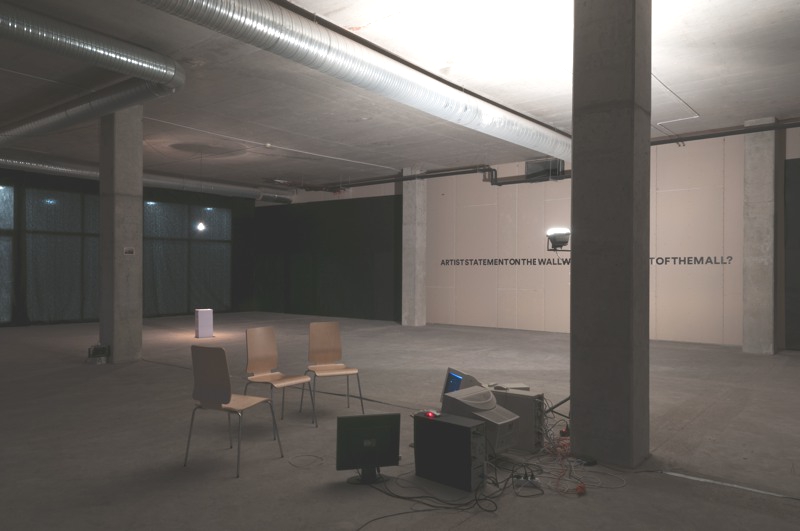
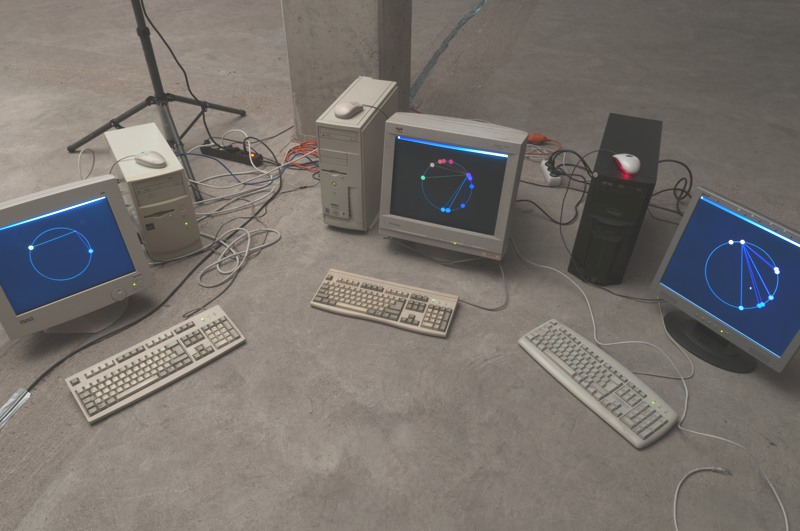
Fig. 1-2. JMVC, Vilnius, 2013
Solo installations at OKK/Raum 29 in Berlin (Fig. 3-14) and Malonioji 6
(Fig. 15-23) in Vilnius in 2014, for the first time, fully implemented
Darknet Freenet mode and was arranged on twelve computers while
eliminating the chairs provided in the first installation. The computers
installed within the space claimed less importance and were placed in
order to fill up physical space. At the same time, focus was placed on
monitors showing the interaction between the computers (nodes). The
Darknet Freenet mode, which here was installed for the first time,
enabled the virtual relocation of computers, thus reducing the
importance of the computer location registered in the title of the
installation, except as the previously mentioned starting point of the
mapping territory and its non-human nature.
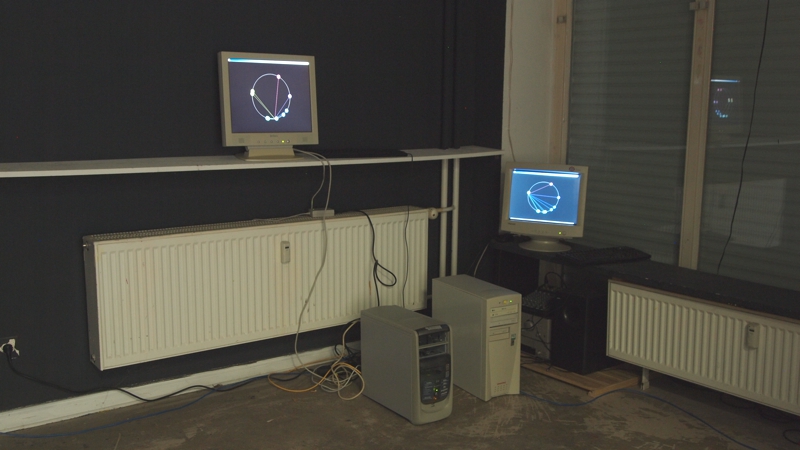
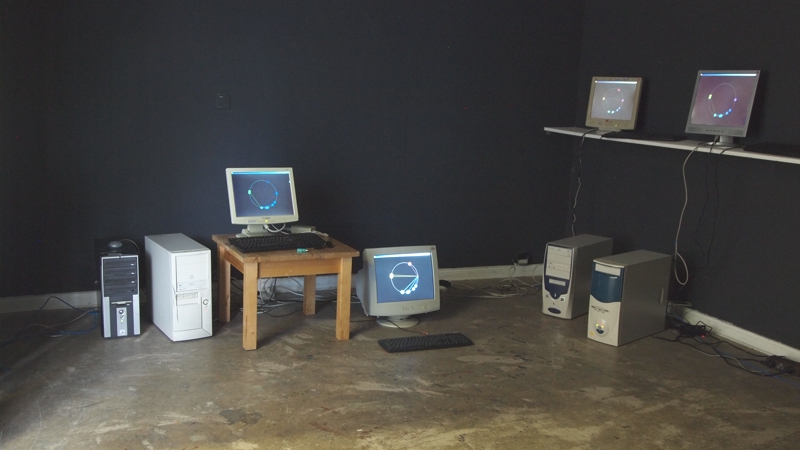
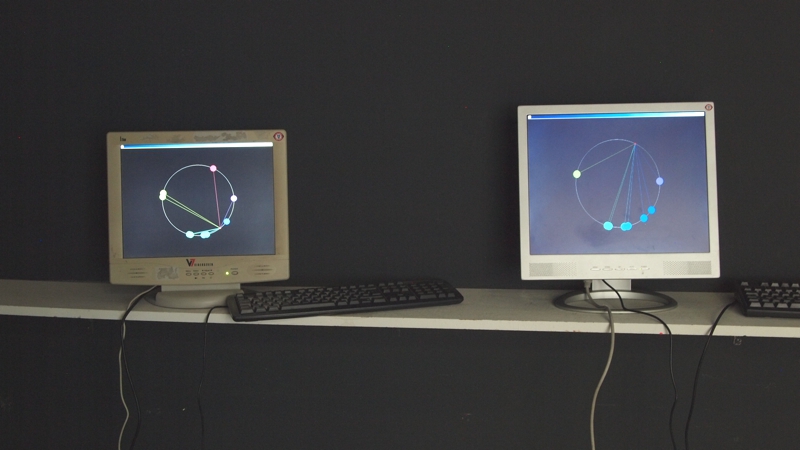
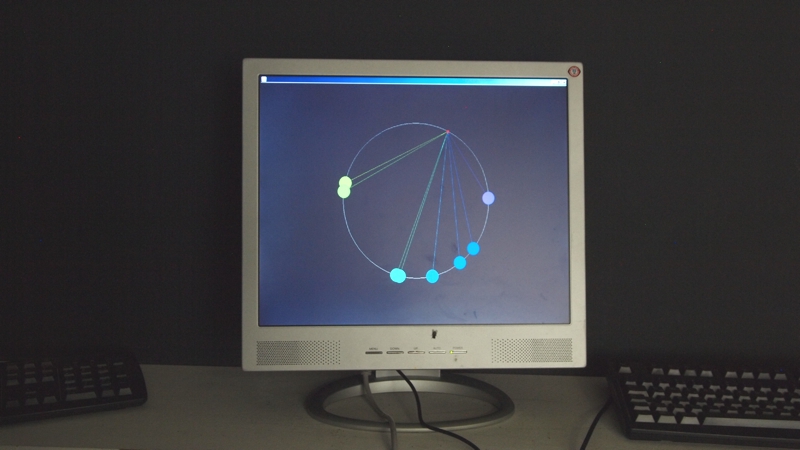
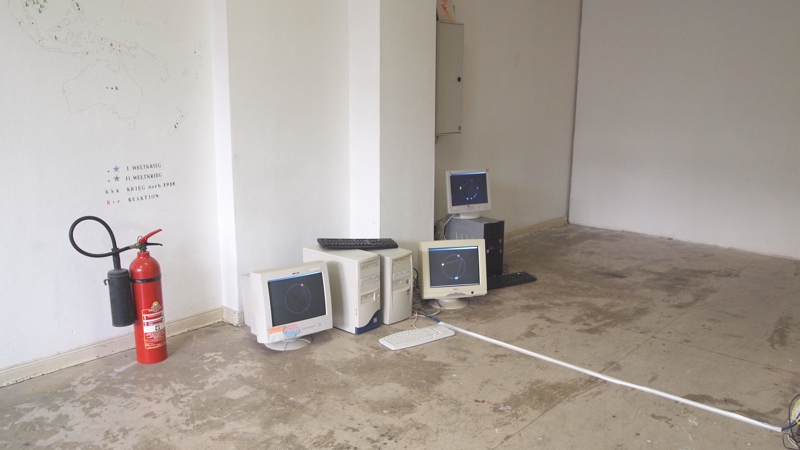
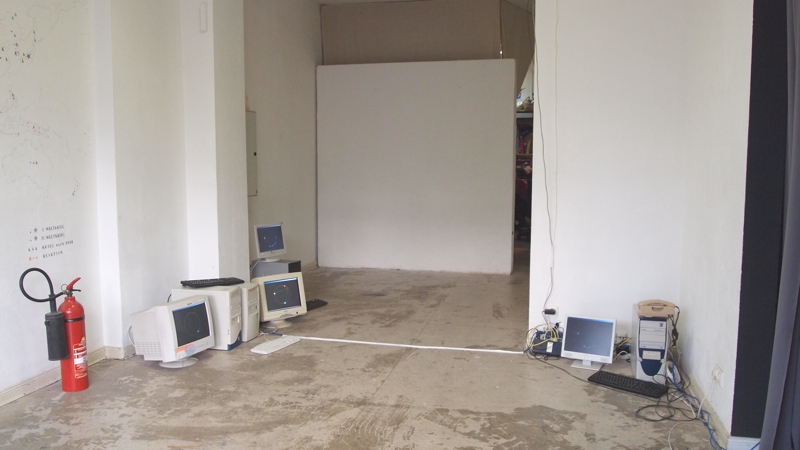

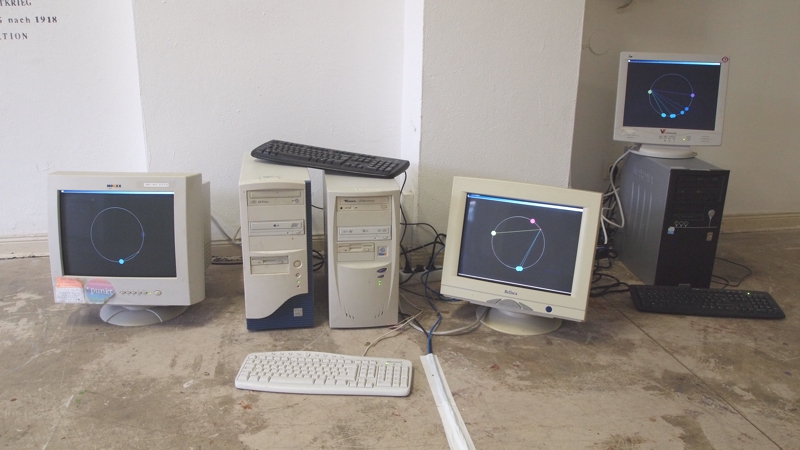
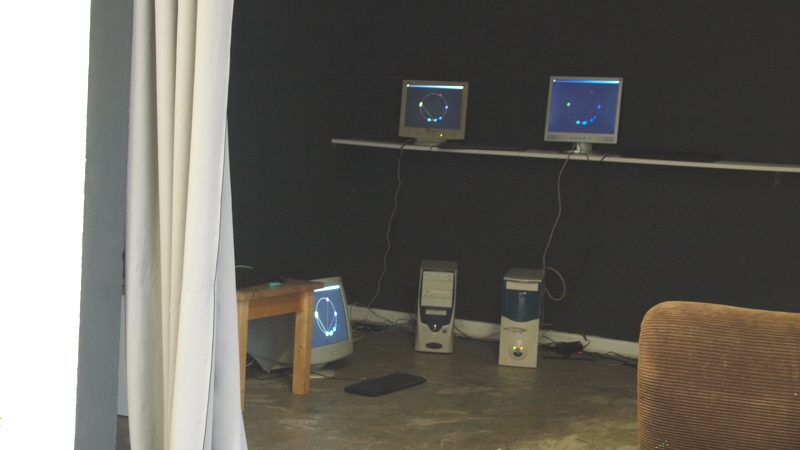
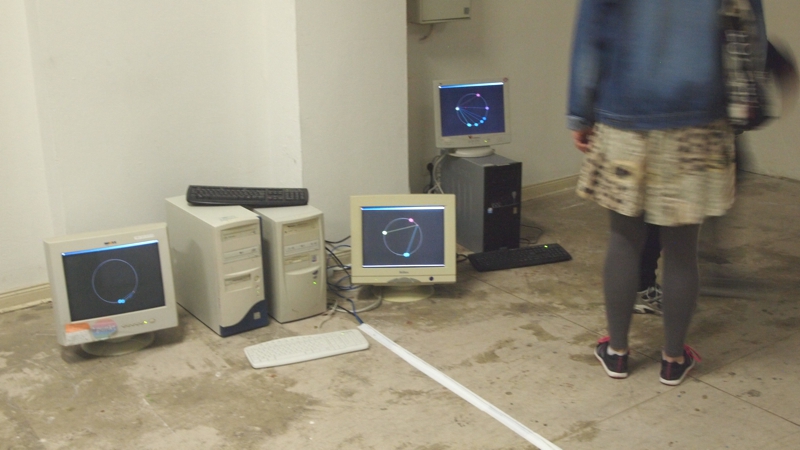
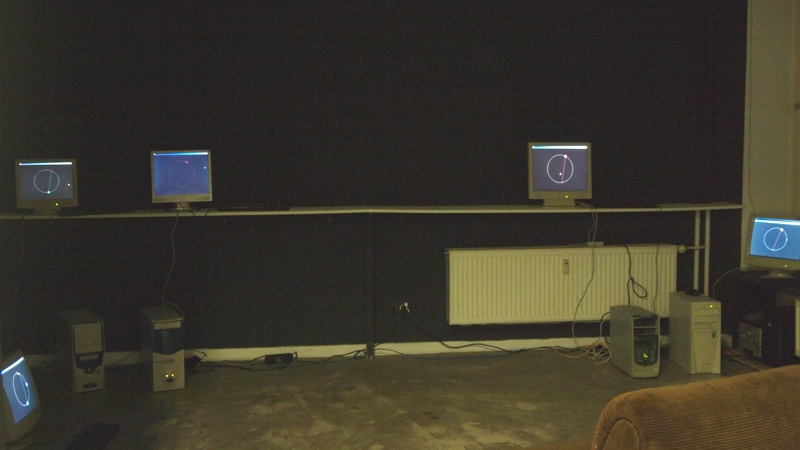
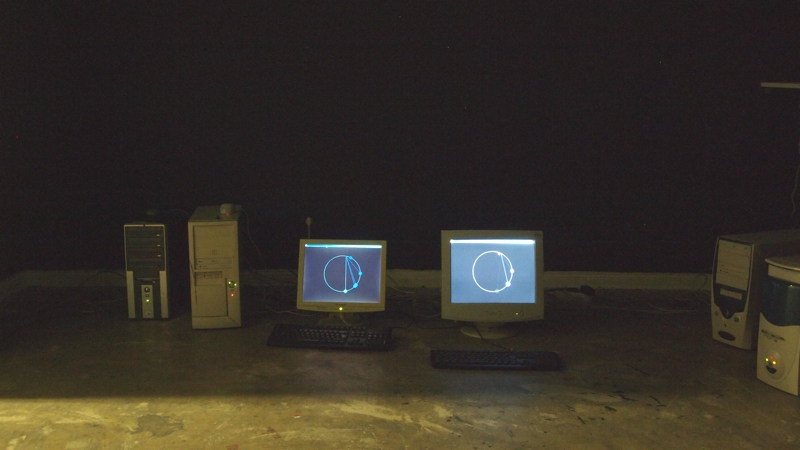
Fig. 3-14. OKK/Raum 29, Berlin, 2014
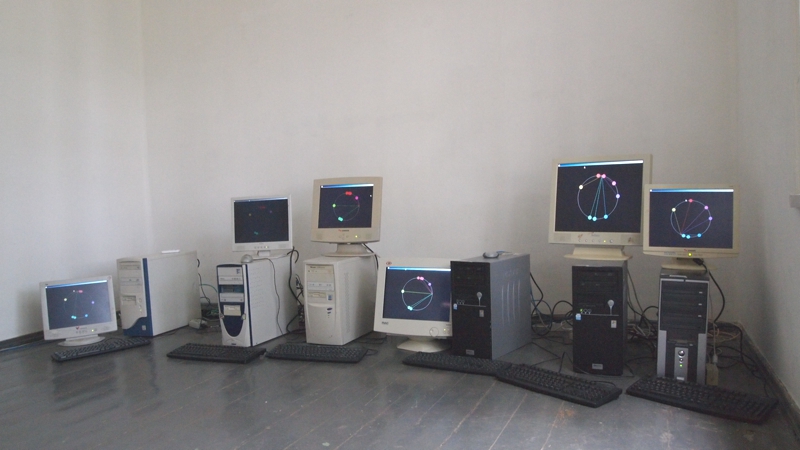
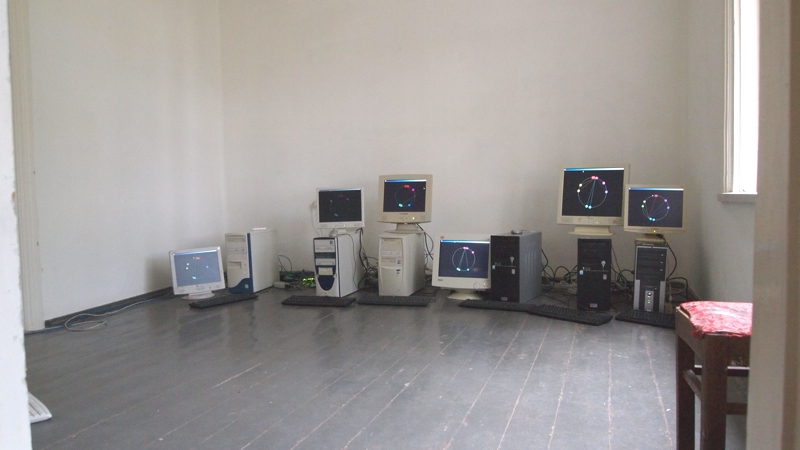
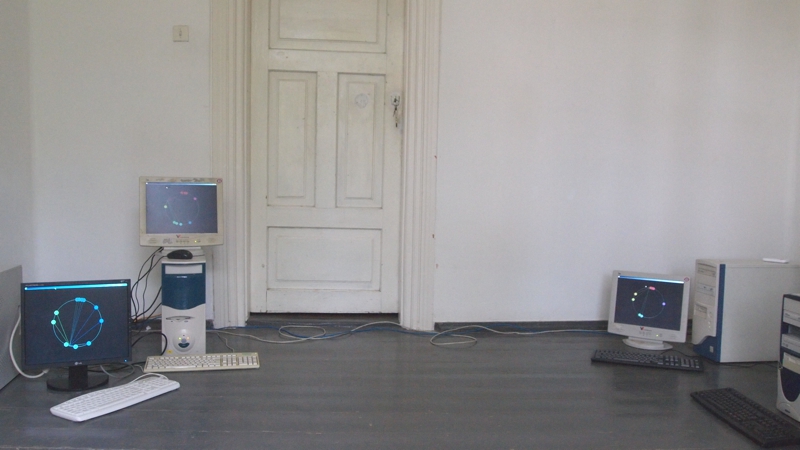
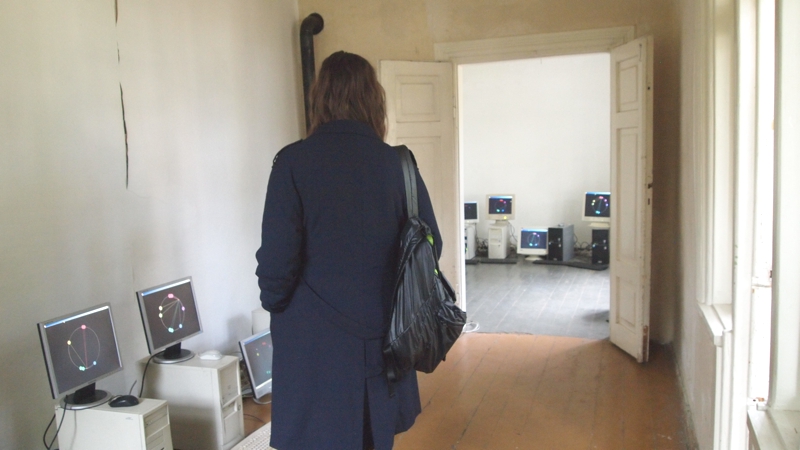
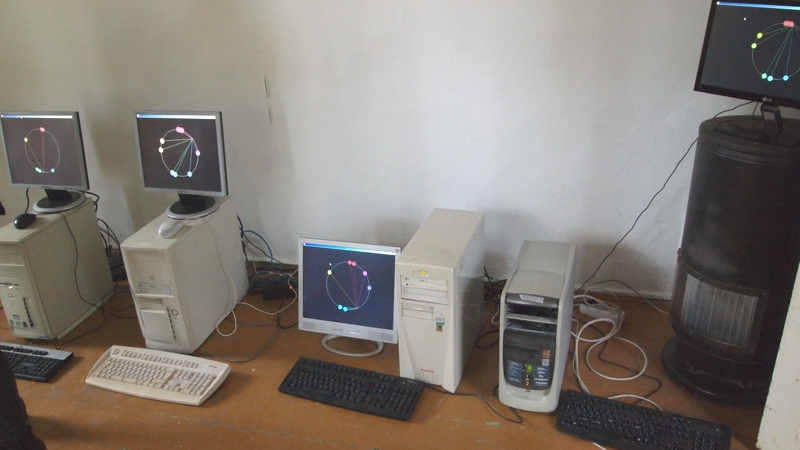
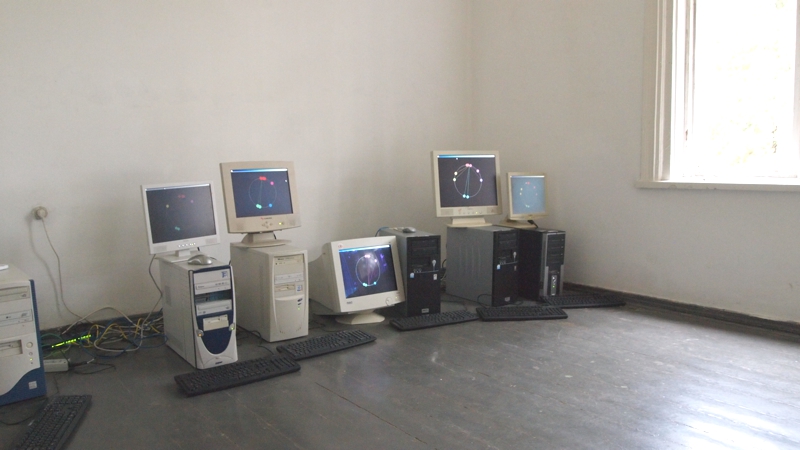
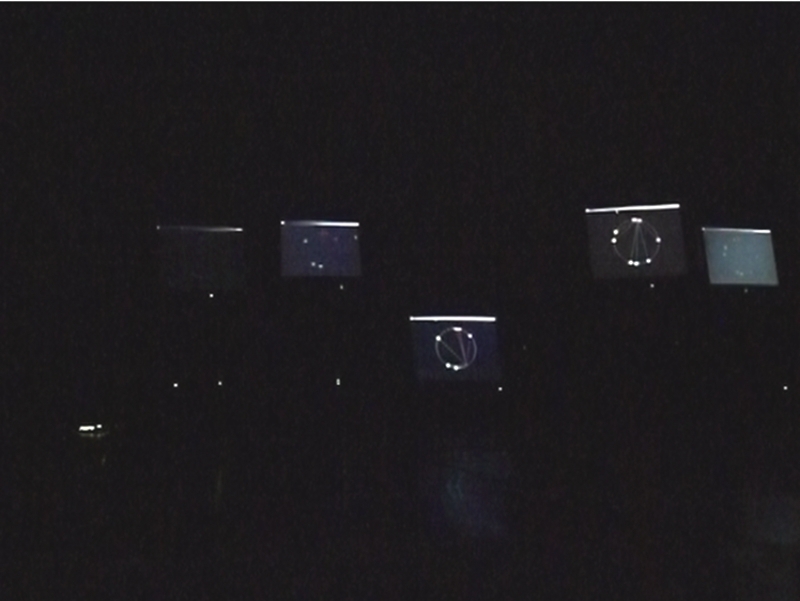
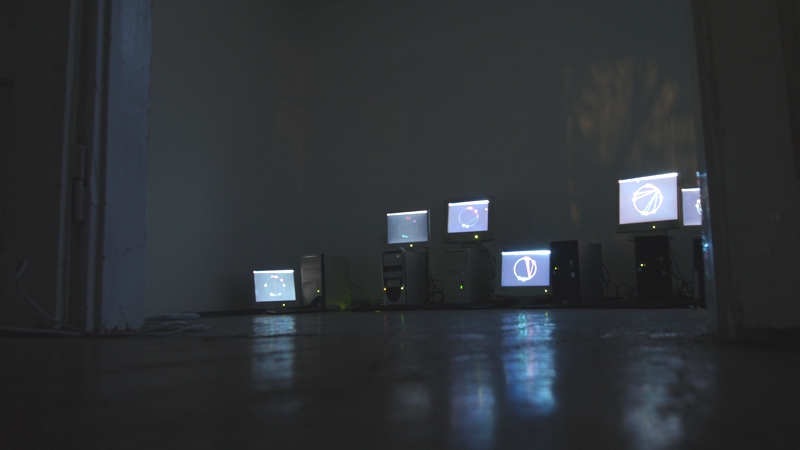
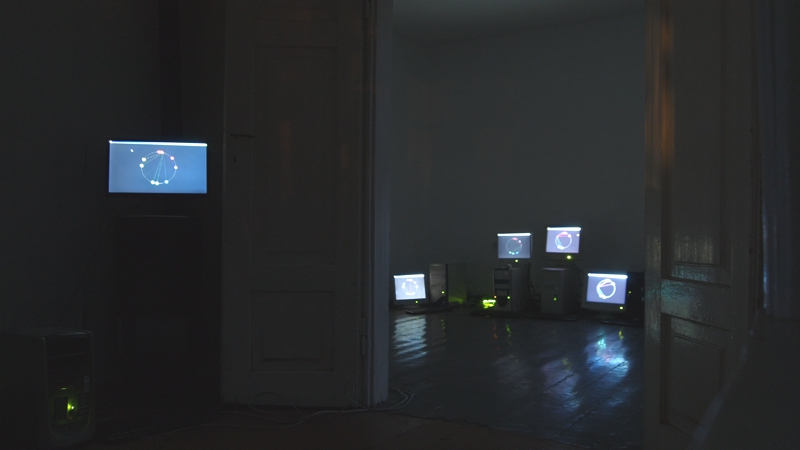
Fig. 15-23. Malonioji 6, Vilnius, 2014
The first development of the installation and the proposed life-like
environment was not convincing because the installation did not simulate
life directly. Therefore, a further concept extending to distributed
neural networks was considered and introduced.
The study anticipated that the Darknet Freenet would potentially
function as a neural network, triggering neighborhood neurons to move
chunks of information back and forth. It was assumed that, within the
time t, the nodes connected and sharing similar information in the
Darknet Freenet would get closer to each other, forming clusters of
information similar to those stored in the cortices of the brain. The
expected outcome was the proposition that the movement of digital
information in the Darknet Freenet be likened to information spread
throughout the brain.
Such a framework enabled the installation to be accelerated with yet
another plugin that would be able to collect information from the
outside. A new Automaton plugin was designed in order to collect
information from the Internet and to upload it to the Freenet. Although
the Automaton made automated functions, the question remained how and
what information would be selected, if that information could be
randomized in such a setting, and, if yes, at what level. The bid was
made for human interaction. In order to trigger automated functionality
(in a neural network this would mean "firing" neuron), a manual search
would need to be performed. Therefore, all this software architecture
brought yet another aspect to the installation: the idea of an
artificially intelligent system.
The two individual exhibitions were followed by an installation at the
international festival for new media, Pixxelpoint in 2014 in Nova
Gorica, Slovenia (Fig. 23-24). Although the installation only used three
computers, the work was finally complete with fully functional
Visualization and Automaton plugins, which do not require human input.
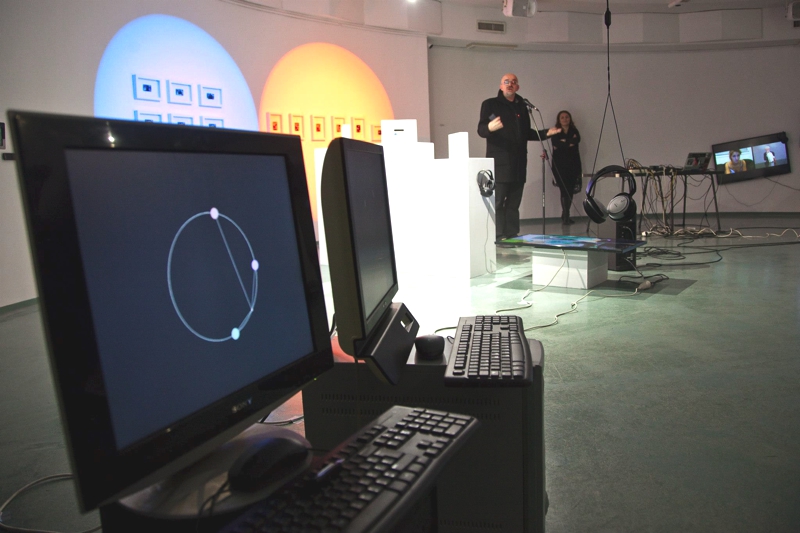
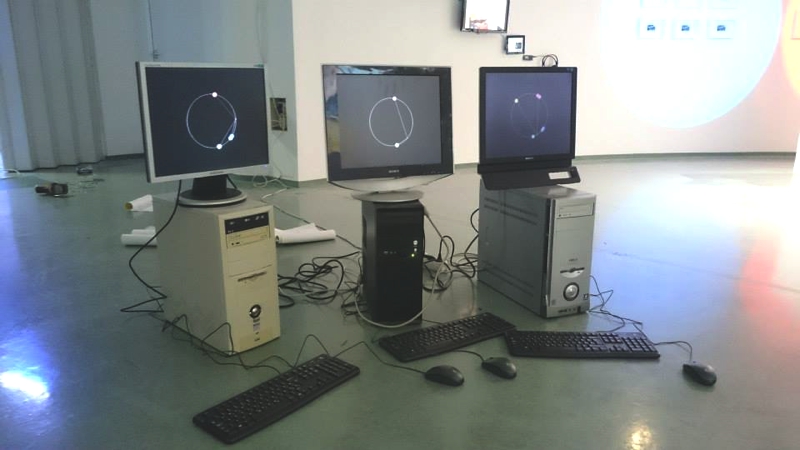
Fig. 23-24. Pixxelpoint, Nova Gorica, 2014
The conceptual part was slightly changed once again because the
artificial neural network used to describe the installation was too
ambitious and not obvious enough. The conceptual part was simplified to
the "communication" between computers, proposing a post-human state.
Having only the reference to a social environment and interaction among
people, the concept brought the viewer closer to the idea of a system
and the interactivity of elements within it. Although simplified, the
installation included all elements defined at the beginning of the
research, including the updating of information based on the previously
available information in the databases, the interaction with the
external world (in this case, the Internet), and the exchange of
information with other similar elements (in this case, computers charged
with similar software architecture).
























